A Hawken Journey
A HAWKEN JOURNEY
Rod Scobee
As far back as I can remember, the old ways have held my interest. Specifically, anything to do with hunting, exploring, African safaris and the opening of the west. So, the Mountain Man era and legendary Hawken rifle would be at the top of that list of my focus.
As I am sure with many of my generation, this journey was further fueled by the 1972 movie titled Jeramiah Johnson. The mountain man lifestyle and Hawken rifle were the real stars of this movie, at least in my mind.
Rod’s Hawken, 2021
Around 1980, I was able to acquire a Thompson Center replica Hawken muzzleloader through some horse trading, and now I finally had a rifle that was at least called a Hawken. The rifle was a .50 caliber and served me well for a couple of hunting seasons. I learned, mostly from trial and error, to get acceptable minute-of-deer accuracy. Having more than a passing interest in a particular subject has a way of showing you what you don’t know, and how much you are missing. Let me explain. This was prior to the Internet or cell phones. After doing some research at the local library and bookstores, I came across three books that had mountains of information. These books are: Hawken Rifles, the Mountain Mans Choice and Fifteen Years in the Hawken Lode, both by John D. Baird and The Plains Rifle by Charles E. Hanson Jr., opened the world of Hawken rifles to me that I was not aware of to that point. It was exciting, and honestly the amount of information was a little overwhelming, but these books did show me what was possible and historically correct. Many of the subtle details and specifications of a genuine Hawken rifle--the accuracy and awesome killing power that these big bore rifles could deliver for taking game or dispatching any threat, be it man or beast.
About this time of researching the Hawken rifle happened and after enlisting in the military and starting a family, the Thompson Center was sent down the road for reasons I don’t recall anymore. But the seed had taken root, and for years I consumed any information I could on Hawken rifles, and I kept telling myself that someday I would acquire another one that could be considered as genuine to an original as possible.
Fast forward to the summer of 2019, as fate would have it, I was fortunate enough to meet Mr. Bob Woodfill. I have read many of his articles on shooting and building replicas of original Hawken rifles in the Muzzle Blasts magazine. He is very knowledgeable on all things Hawken, and over the following months I took every opportunity to ask questions and draw any knowledge I could from him. Mr. Bob, being the perceptive man that he is, could tell from all my questions on specifications and comparisons that I was contemplating a build of my own Hawken, and offered to be of assistance. I of course, could not accept his offer any faster, and thus set this chapter of the journey in motion. I have always had a fancy for the Jim Bridger Hawken rifle and decided to try and replicate the specifications as best I could. Mr. Bob compiled a list of parts and materials that would be required, and I set about trying to acquire all of it in the COVID 19 induced shortage for all things shooting.
Rod’s lock plate held in a vise for cleaning
After much aggravation and what felt like scouring the earth, the entire parts list was gathered, mostly from Track-of-the-Wolf, Inc. Again, I wanted to build a rifle as close to the original Bridger Hawken as I could get, and most certainly it would not be an exact copy to the smallest of detail. For example, I believe it is accepted the original Bridger Hawken has a slightly larger barrel than the 1 1/8” at the breech to 1” at the muzzle .54 caliber Rice barrel that I obtained. I felt lucky to get it at the time because of the shortage of suitable parts. Also, the original has a maple stock and this one would have a walnut stock, which was used for Hawken rifles of the time, but not the Bridger. The 36” long Rice barrel was trimmed to the 33 1/8” in length as the original was cut.
Below; a selection of photos taken during the building process

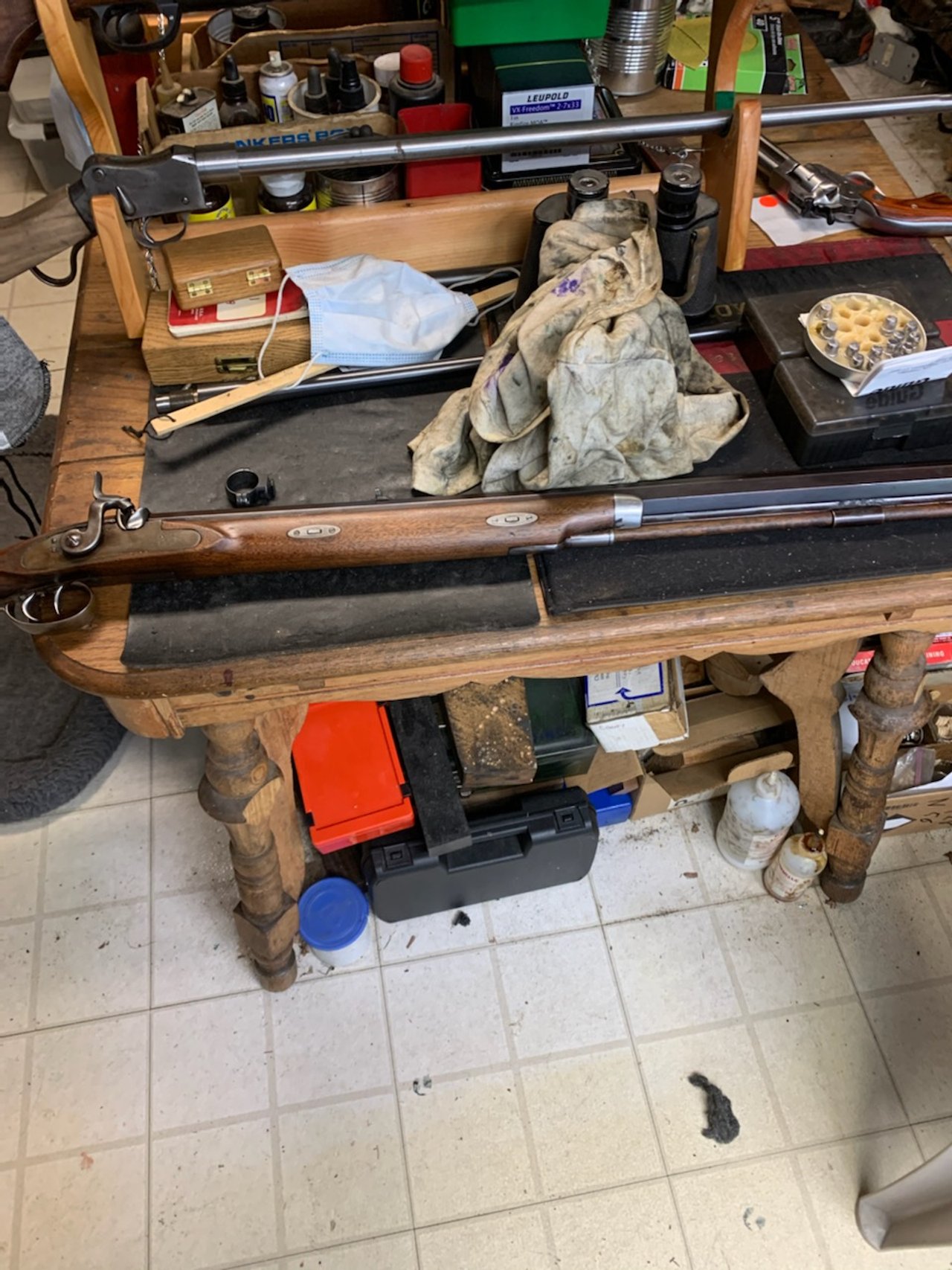
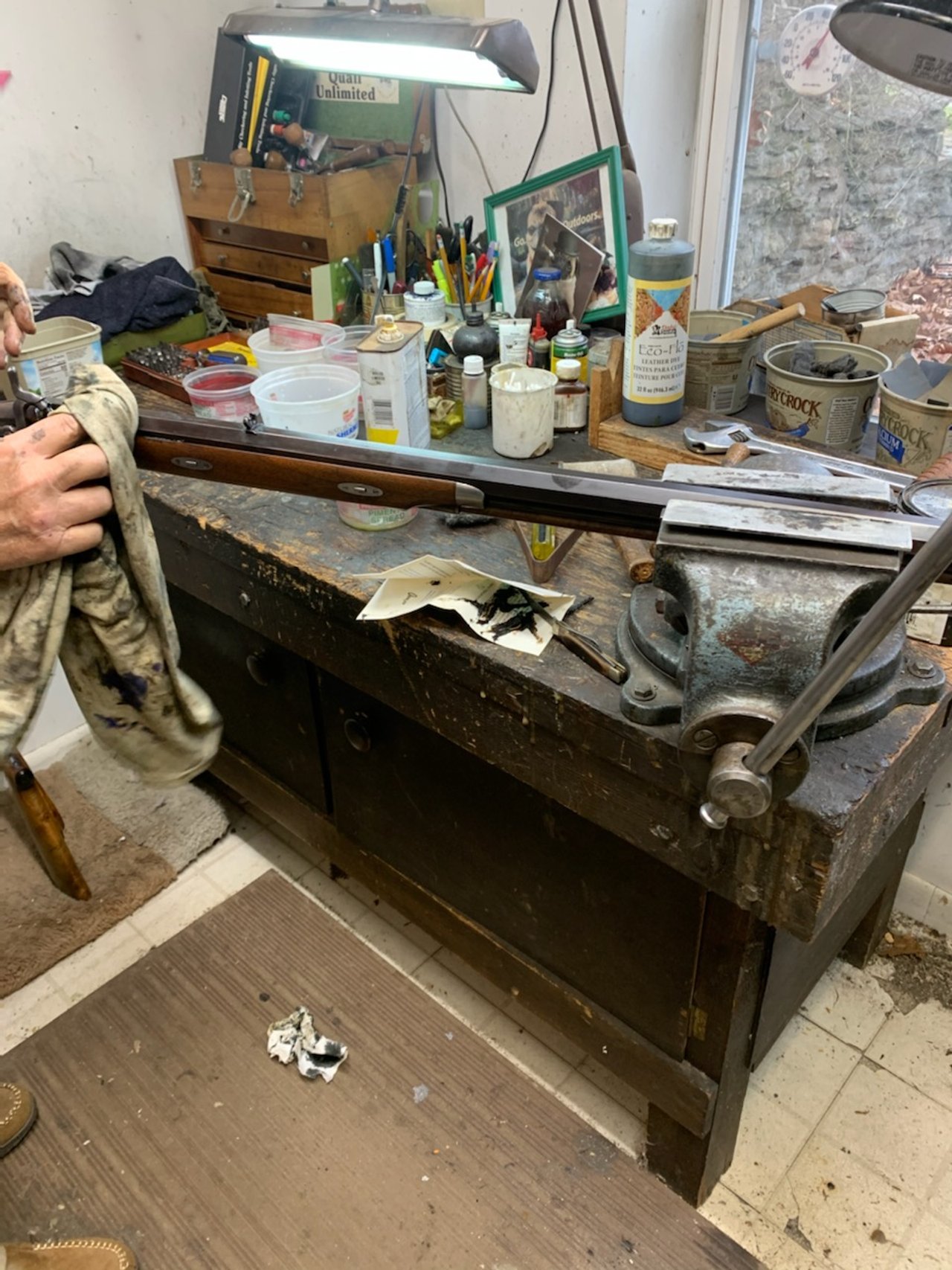
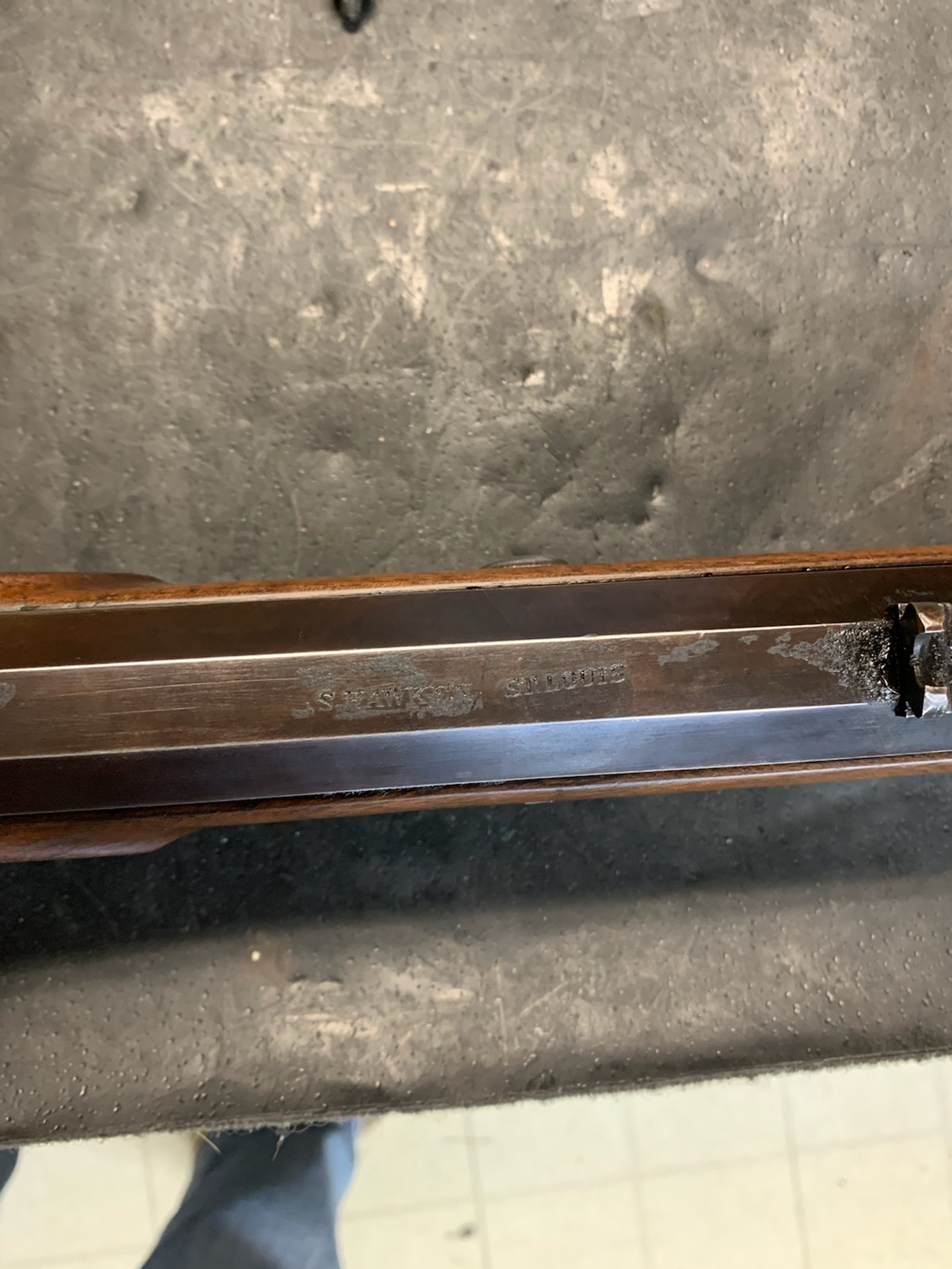
My other wish was that its appearance be as though it had been used by a mountain man back in the day. This was accomplished by an aging process performed by Mr. Bob, that I will not go into here, but will say, is not for the squeamish man with a shiny new Hawken rifle. After several tense moments in this process, I could not be more pleased with how it turned out. It looks as if it could have been in the mountains or on the plains 150 years.
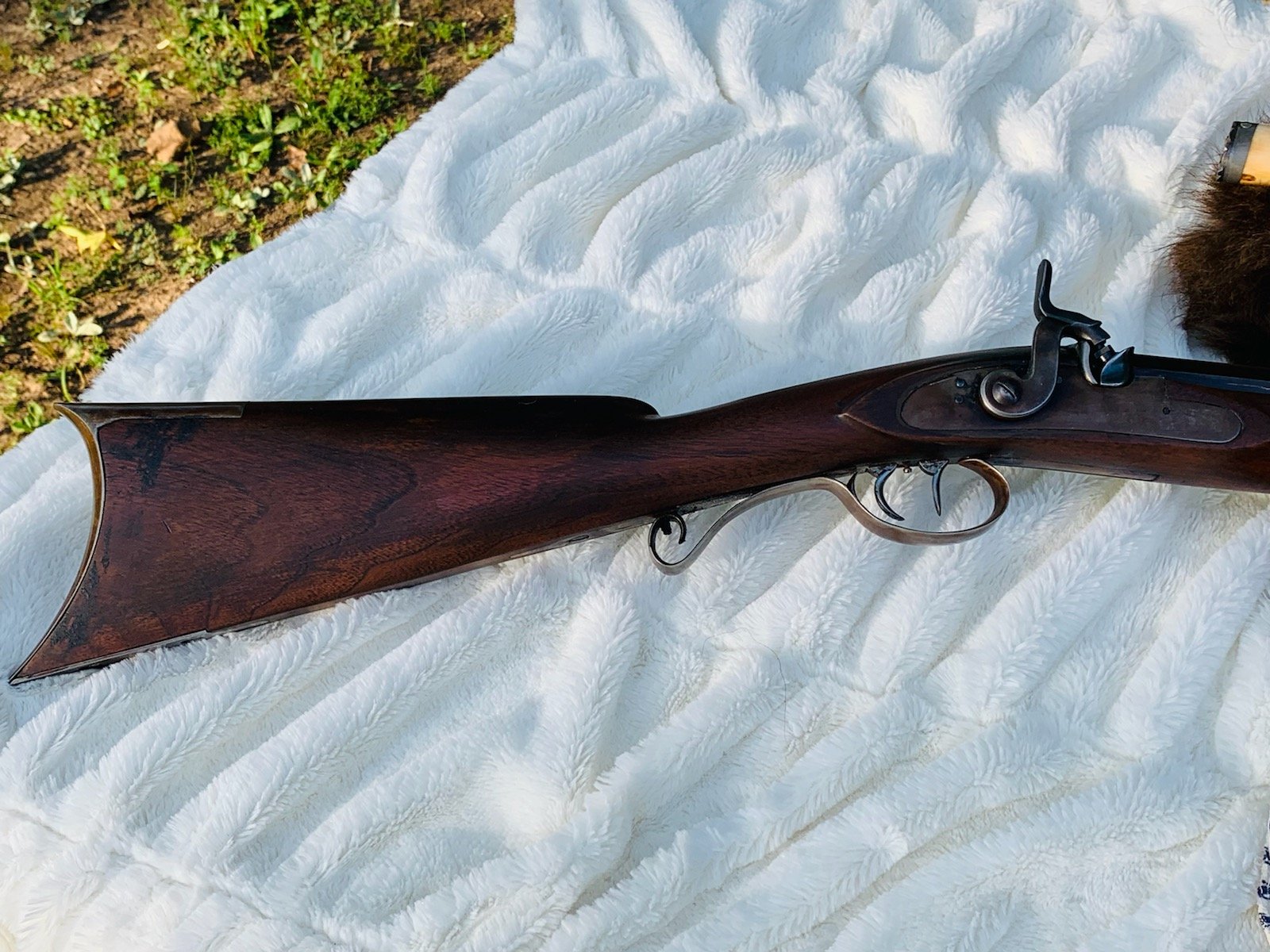
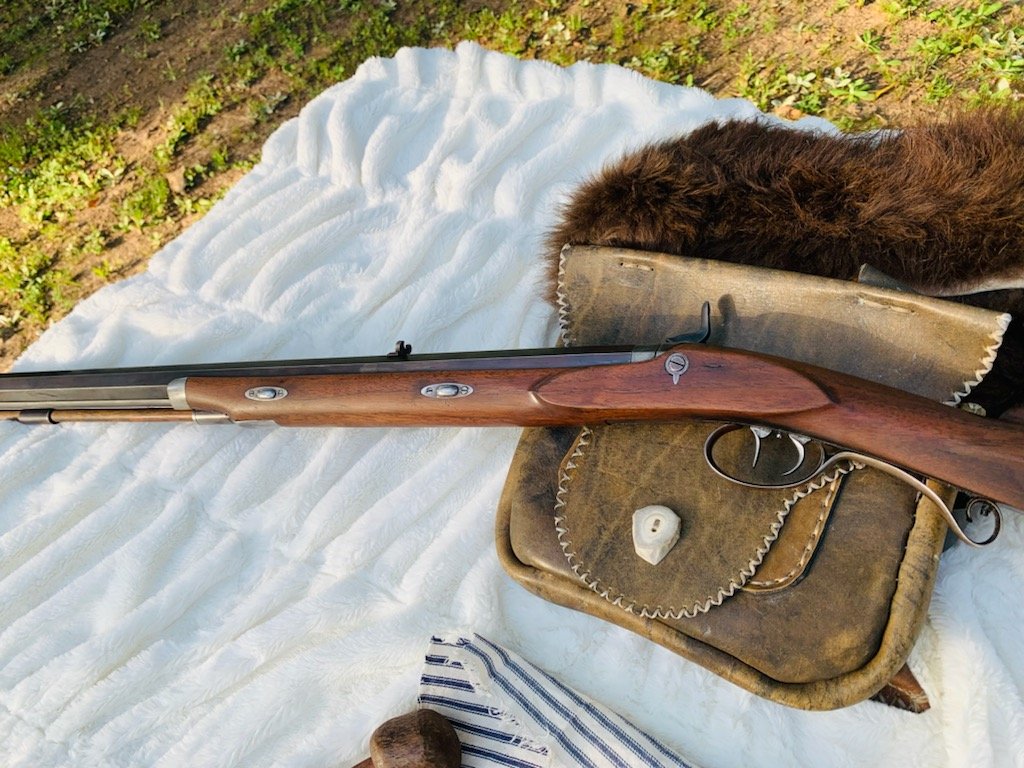
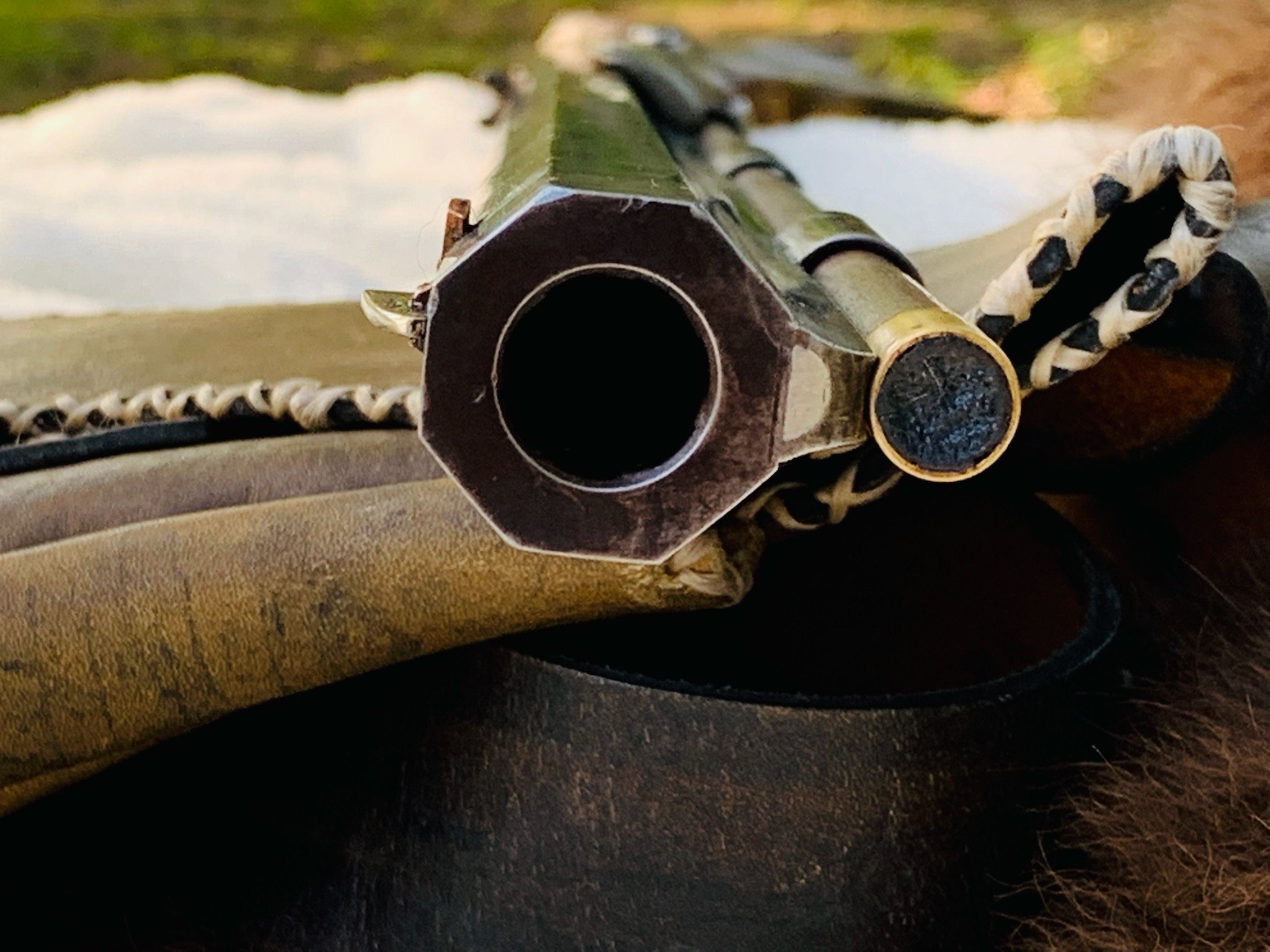
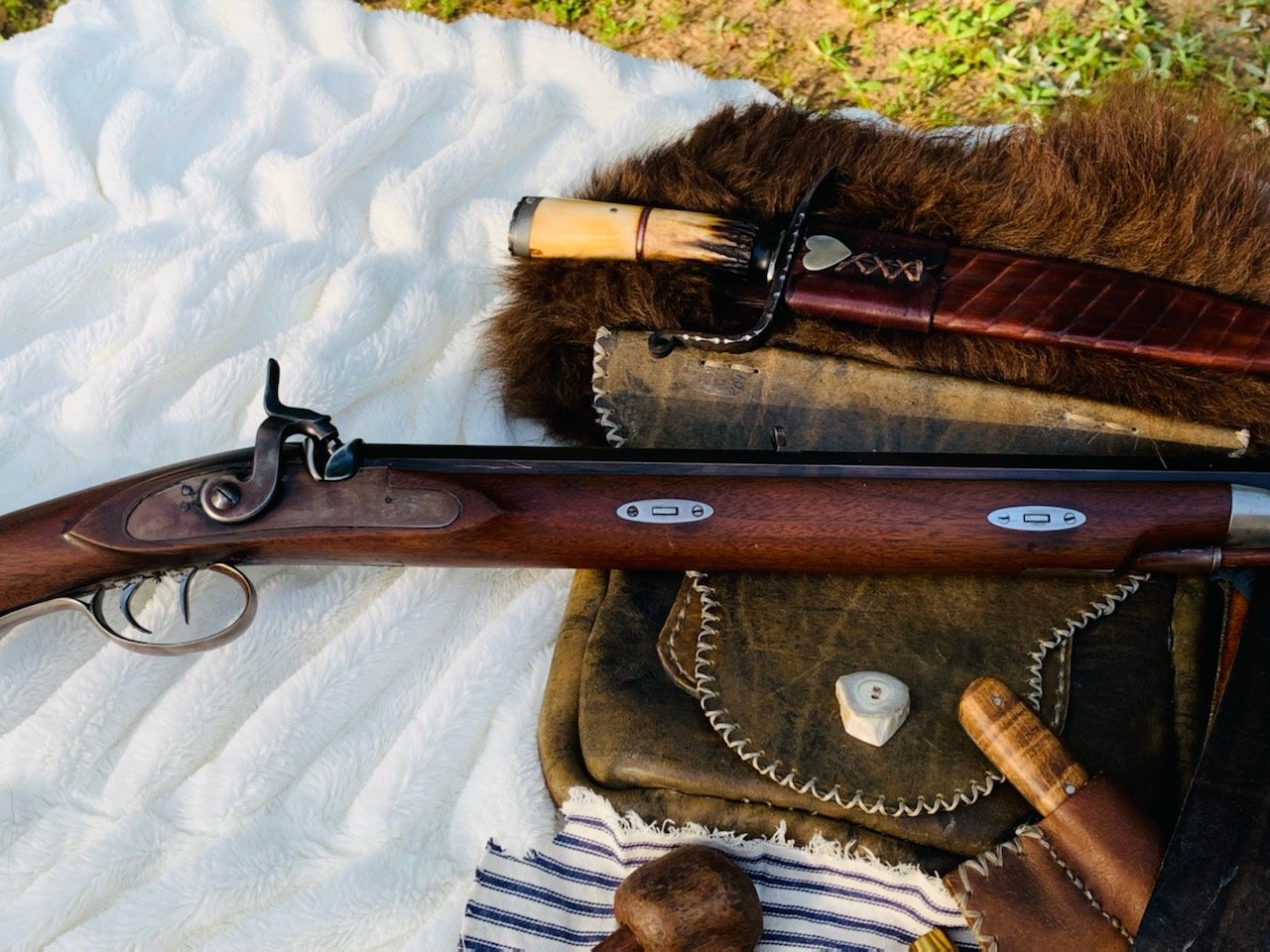
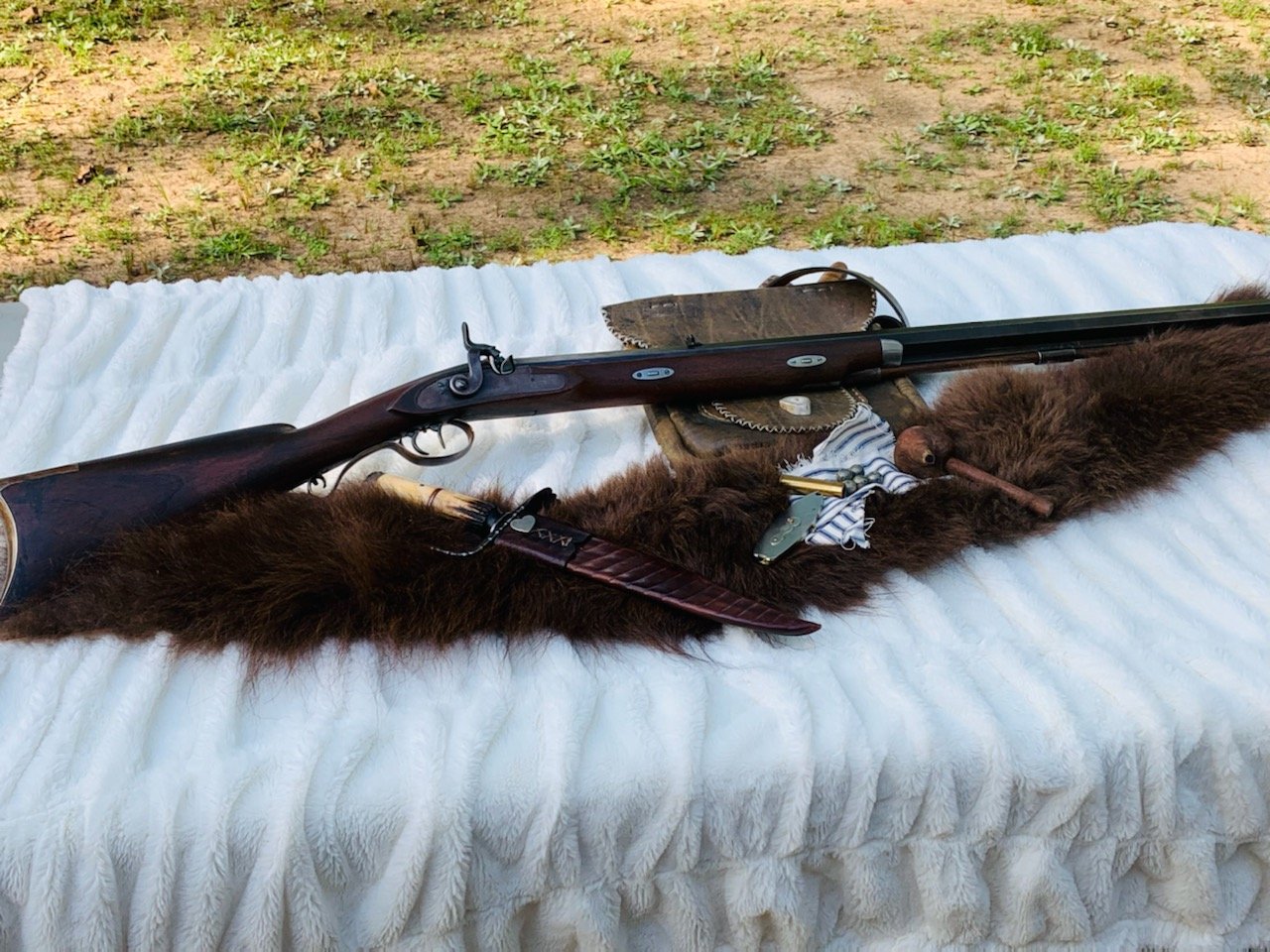
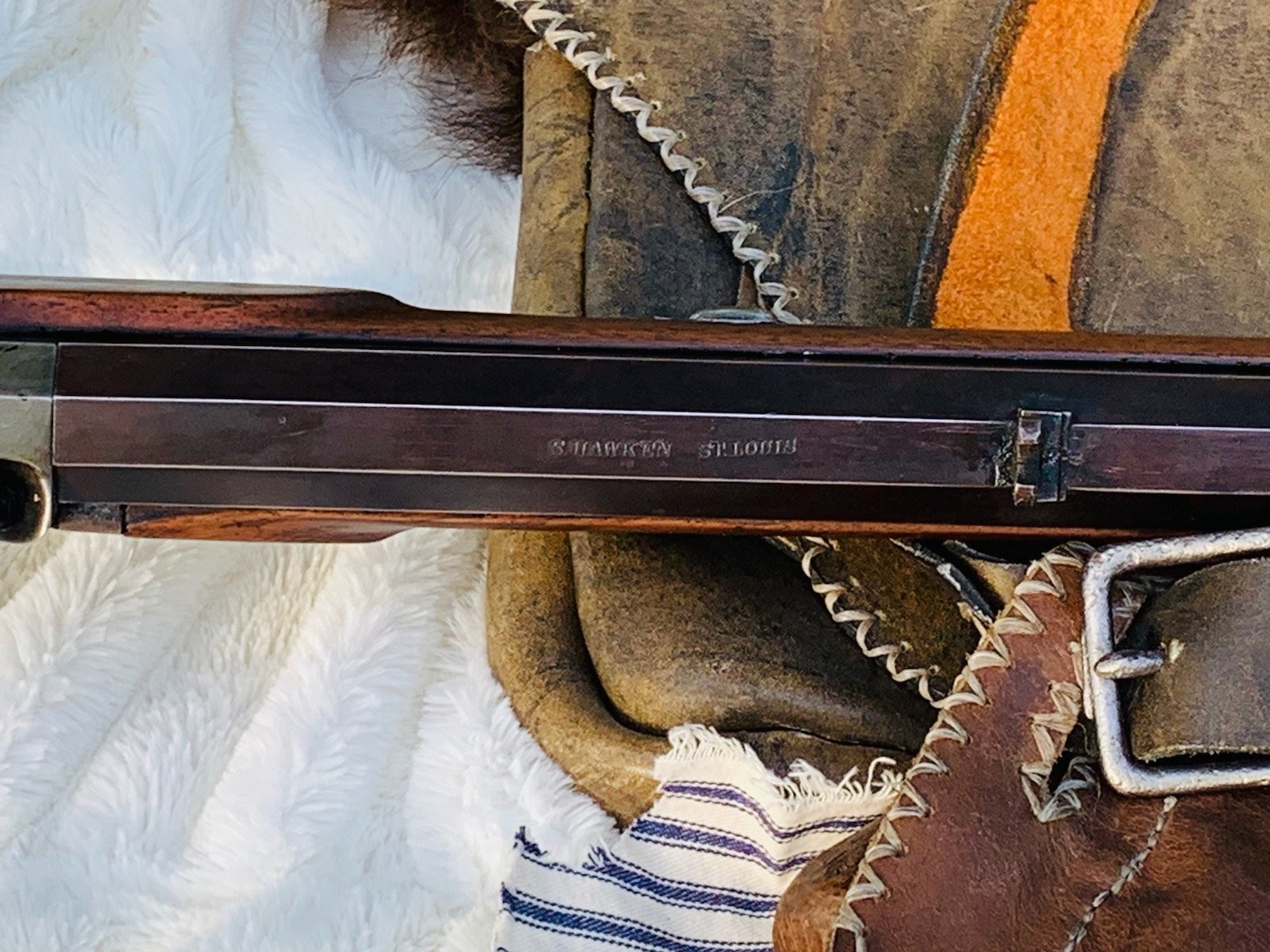
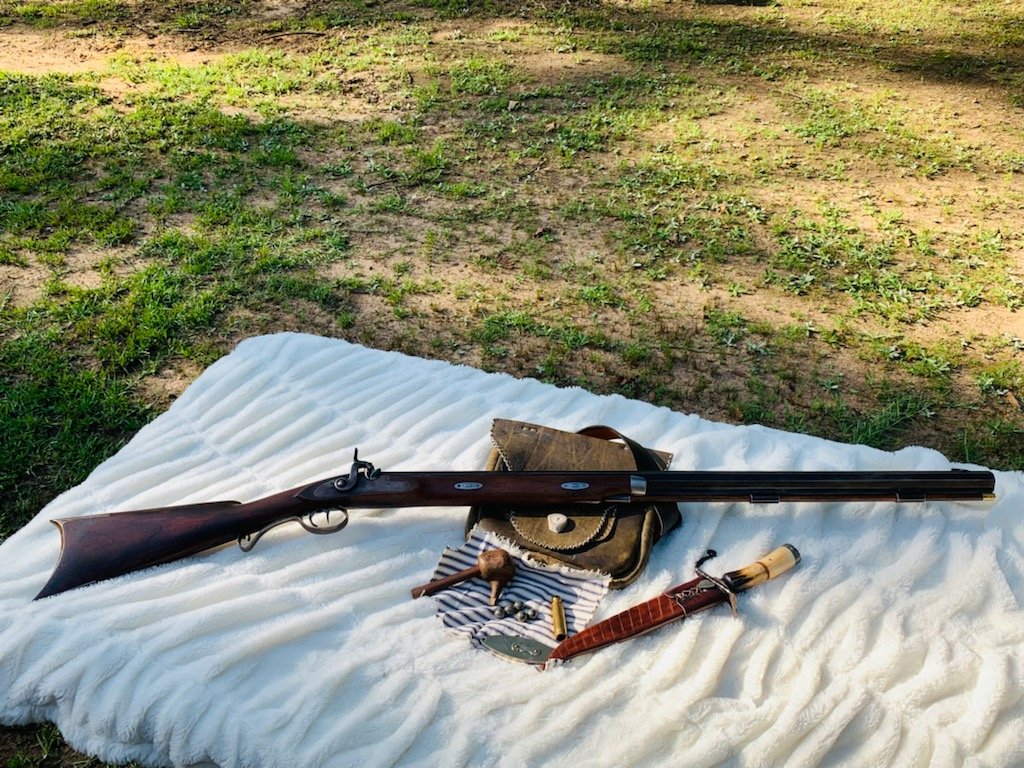
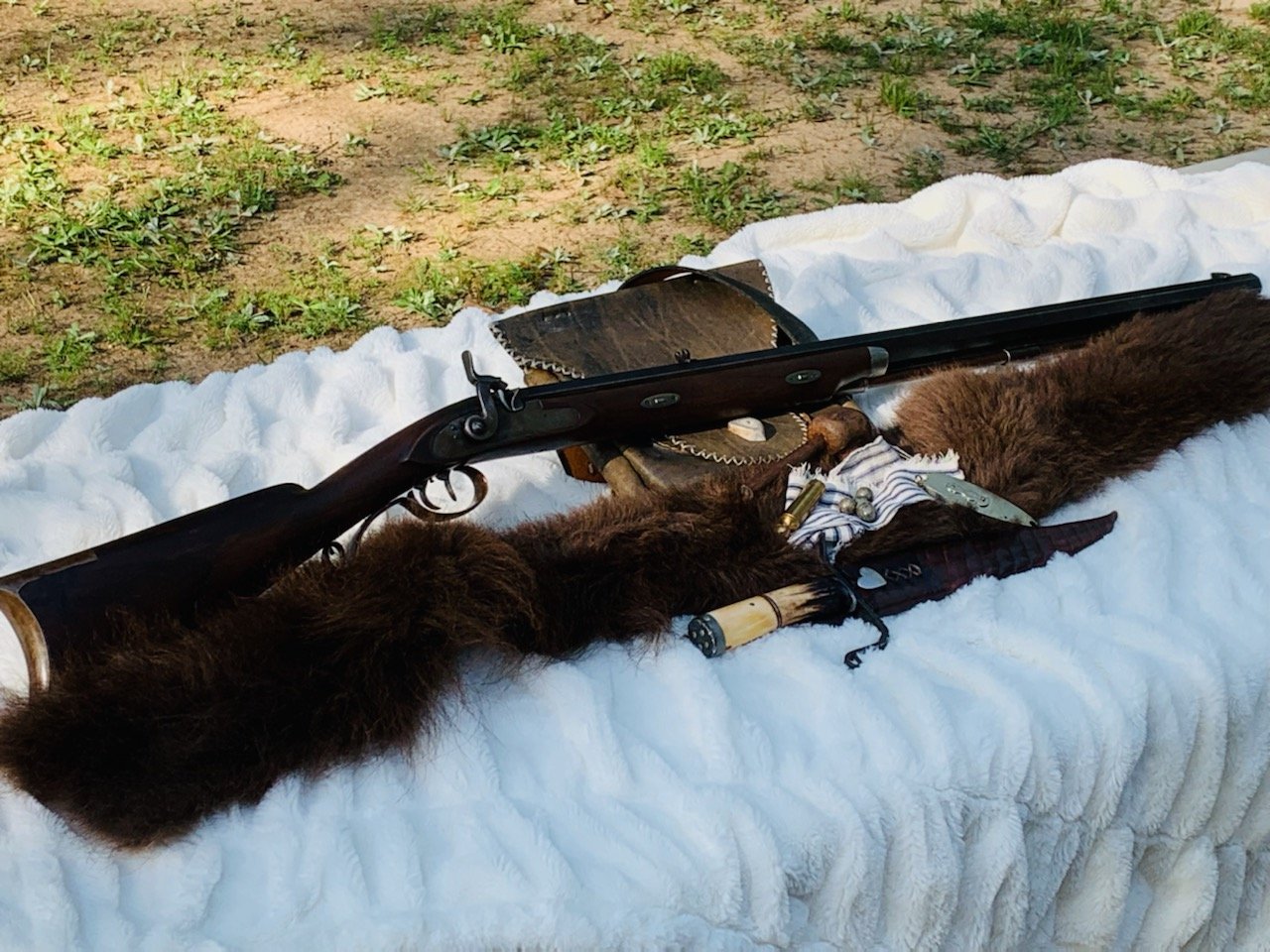
At this point I would like to take this opportunity to thank Mr. Bob Woodfill again. Without him I would not have the quality of Hawken that I now possess. He did all the technical work and I assisted when and where I could with the grunt work of draw filing, sanding, polishing and such. That is after all, the way of the professor and the student, in pursuit of credit hours in the study of Hawken. Most recently, Mr. Woodfill has written a book titled, THE HAWKEN RIFLE, Its Evolution from 1822-1870, and to my knowledge, this is the first book dedicated to the Hawken rifle since the above-mentioned Baird books 50 years ago. This is a good contribution to Hawken history. Whether you are a dedicated Hawken researcher, student or just have a passing interest, I highly recommend this book. It is full of Hawken information and historical data. The 317 illustrations and color pictures alone are worth the price of admission.
The Author, Rod Scobee, with his Hawken.
In the next installment of this journey, I will be doing load development in preparation for hunting season and with any luck will reduce the wild hog population.



